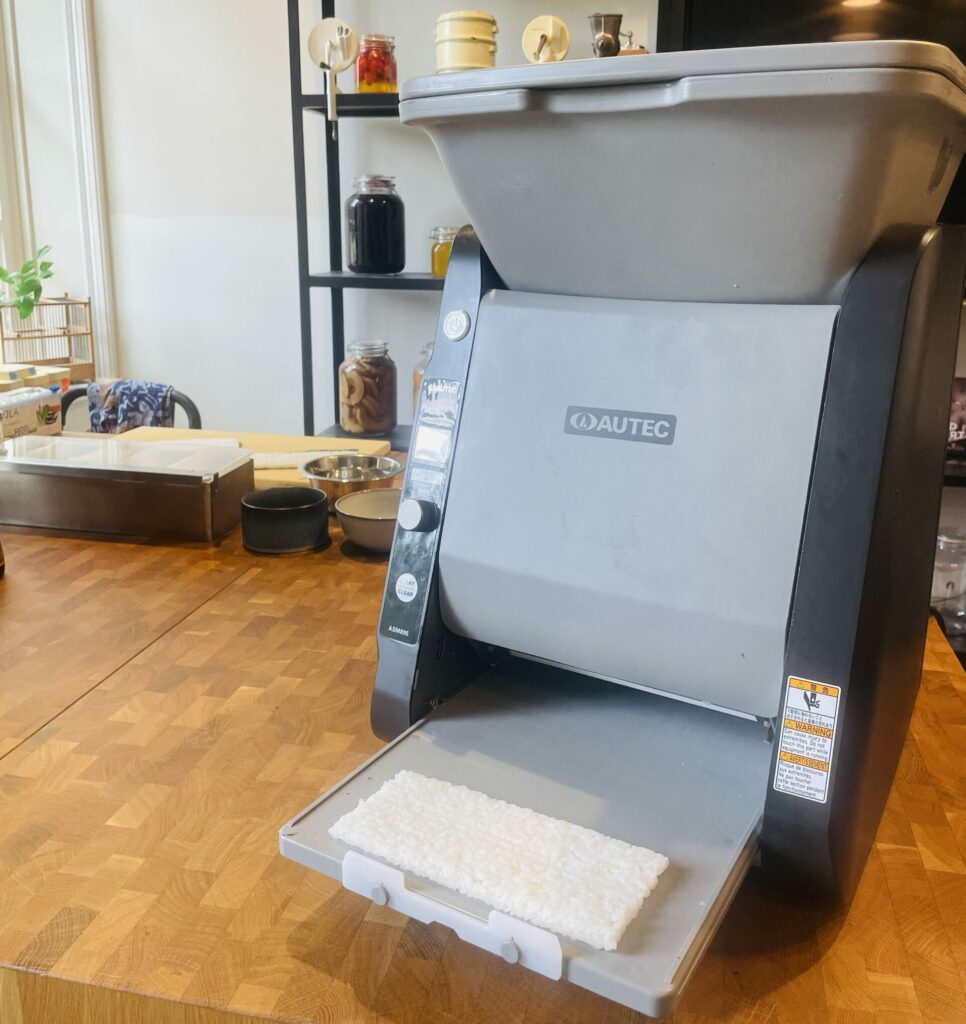La robotisation of the Japanese cuisine represents a silent revolution that has transformed the way traditional dishes are prepared and served. This technological evolution, rooted in culture of innovation is a perfect illustration of Japan's ability to combine culinary tradition with modern technology.
The beginnings of culinary automation
L'history of robotisation in Japanese gastronomy began in the 1970s. 1960. It was a period considered to be an economic miracle in Japan. The country was recovering from the war and its inhabitants were gradually regaining their purchasing power, creating a An atmosphere conducive to technological innovation.
It was at this time that the first food processors and multifunctional food processors are making their appearance, marking the start of a revolution in the food industry. L'automation of repetitive and time-consuming tasks in the kitchen was a response to the need for a more efficient kitchen.efficiency and standardisation particularly important in a context of strong urbanisation and economic development. Visit Japanese restaurateursalways keen to maintain the quality of their dish while optimising processes, saw in this technology an opportunity to reconcile tradition and innovation.
The advent of Sushi machines
As an emblem of Japanese cuisinethe Sushi was one of the first dishes to be automated. This Japanese delicacy, an art traditionally passed down from master to apprentice, requires perfect precision and consistency to make.automation.
The first Sushi machines have completely changed their production by manufacturing a large number of parts per hour with perfect regularity. These innovations were not intended to replace the know-how and expertise of the Sushi mastersInstead, the aim was to support it by automating the most repetitive preparation tasks. This meant that chefs could concentrate more on creativity and finish to their Sushi.
In addition to ease of production, the Sushi machines have helped to democratise these products and meet growing national and international demand. The standardisation of production guarantees a constant qualityThis is crucial to the expansion of this traditional cuisine.

Expanding into other specialities
L'production automation is not limited to Sushi. Over the years, other Japanese specialities have also benefited from these technological advances. For example Gyoza have seen their production automated for uniform folding and optimised baking. The Ramen have also benefited from this technology to improve the preparation of both pasta and stock.
This diversification of automation in the kitchen bears witness to the Japanese desire to apply the principles ofindustrial efficiency to their culinary heritage, without distorting the essence of these traditional dishes. It's the perfect blend of tradition and innovation.
Service robots: a new dimension
L'technological developments doesn't just stop at the kitchen door, it's also making its way into the dining rooms of catering establishments. It's in the 2000s that service robots are arriving in Japanese restaurants. These companions, whether humanoid or not, are capable of taking orders, serving food and entertaining customers to give them a real experience.
In Japan, the futuristic version of a restaurant is that it should be fully automated. These experimental establishments are a real technological showcase which attract customers curious to discover this fusion of culinary tradition and robotic innovation.
Impact on modern industry
Today the robotisation has established itself in the Japanese cuisine as a global benchmark. Machines developed in Japan are marketed worldwide, democratising Japanese cuisine but also its technological know-how.
This technological developments has helped to resolve a number of contemporary challenges, such as the shortage of skilled labour and the need to maintain high production standards.
Future prospects
L'the future of robotisation in Japanese gastronomy promises to be rich in innovation. Artificial intelligence and machine learning are opening up new horizons, enabling machines to adapt to individual preferences and continually optimise their performance.
This technological developments continues to respect the fundamental values of Japanese cuisine precision, quality and respect for tradition. The robotisation does not replace Japanese culinary art, it enhances it by allowing chefs to concentrate on what's essential: creativity and excellence in taste.
L'history of robotisation in Japanese gastronomy demonstrates that innovation and tradition can coexist harmoniously, creating a unique model that inspires theglobal food industry. This technological revolution, born of necessity and nurtured by Japanese ingenuity, continues to write its finest pages, promising a future where technology and gastronomy evolve hand in hand.

